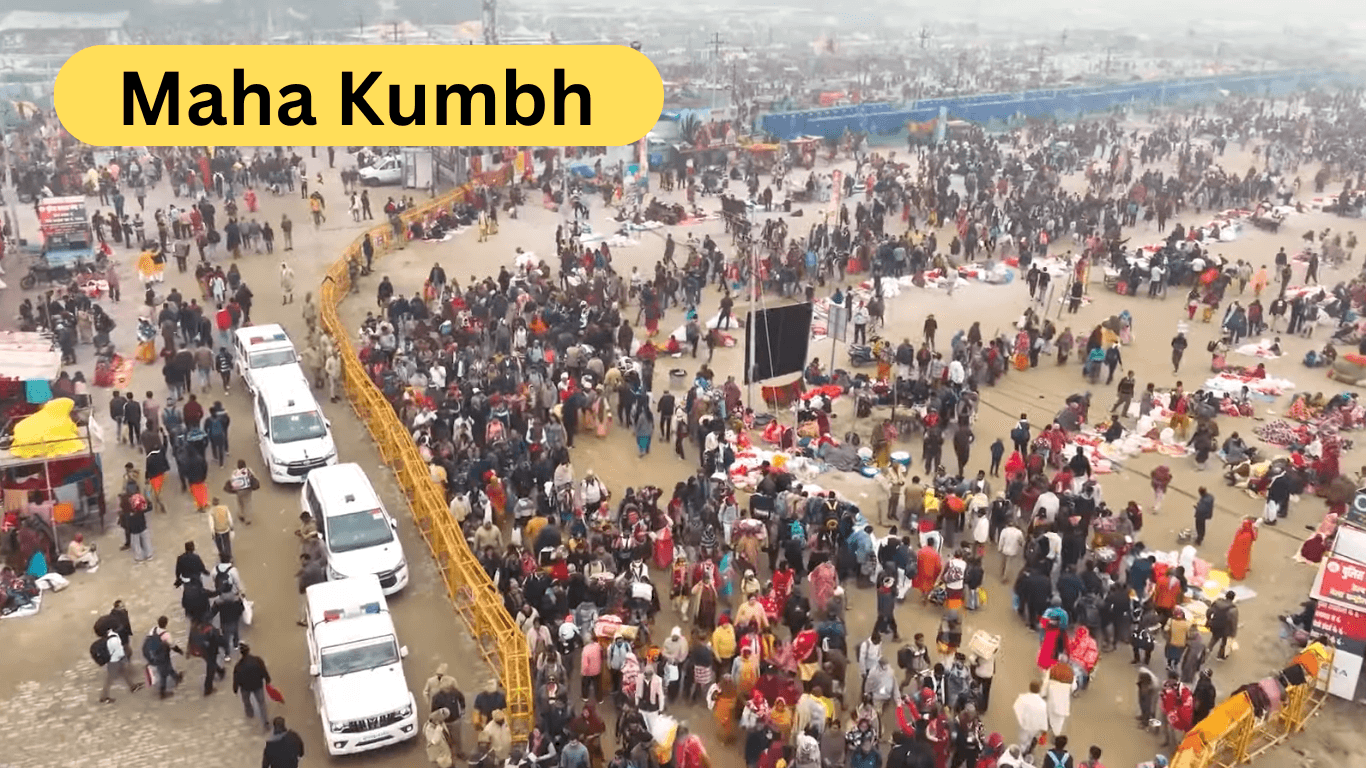India is a land of traditions, festivals, and religious gatherings, but nothing compares to the grandeur of the Maha Kumbh, Held once every 12 years, this extraordinary event attracts millions of pilgrims, saints, and spiritual seekers from across the world. It is not just a festival but a divine confluence of faith, devotion, and ancient traditions. If you have ever wondered about the significance, history, and experiences of the Kumbh Mela, this article will provide you with a complete insight.
The Significance of Maha Kumbh
The Maha Kumbh is more than just a religious event; it is believed to be a gateway to moksha (liberation). According to Hindu mythology, the origin of the Kumbh Mela dates back to the churning of the ocean (Samudra Manthan) by the gods (Devas) and demons (Asuras). During this event, a pot (Kumbh) of nectar (Amrit) emerged, and a battle ensued over its possession. The drops of this nectar fell at four places: Prayagraj (Allahabad), Haridwar, Ujjain, and Nashik. These are the four sacred locations where the Kumbh Mela is held.
Every Maha Kumbh is a celestial event that aligns with planetary positions, making it the holiest time for spiritual cleansing. Taking a dip in the sacred rivers during this period is believed to wash away sins and bring divine blessings.
Table of Contents
The Four Sacred Locations of Kumbh Mela
1. Prayagraj (Allahabad) – The Most Significant Kumbh Mela
Prayagraj is considered the holiest of the four locations because it is the meeting point of three sacred rivers – Ganga, Yamuna, and Saraswati. This confluence, known as the Triveni Sangam, is the primary site for spiritual rituals.
2. Haridwar – The Gateway to Gods
Located in Uttarakhand, Haridwar is where the river Ganga descends from the Himalayas. It is believed that taking a dip here purifies the soul and brings good fortune.
3. Ujjain – The City of Lord Shiva
The Kumbh Mela in Ujjain takes place on the banks of the Shipra River. It is deeply associated with Lord Shiva and is home to the famous Mahakaleshwar Jyotirlinga.
4. Nashik – The City of Ramayana
Situated on the banks of the Godavari River, Nashik’s Kumbh Mela is linked to the Ramayana era. It is believed that Lord Rama, Sita, and Lakshman lived here during their exile.
The Rituals and Traditions of Maha Kumbh
1. The Sacred Bath (Shahi Snan)
The most crucial ritual of Maha Kumbh is the Shahi Snan (Royal Bath). It is performed on specific astrologically significant dates. Pilgrims believe that bathing in the sacred rivers during Kumbh Mela cleanses them of sins and brings spiritual enlightenment.
2. Naga Sadhus – The Mystical Saints
The Naga Sadhus, or naked saints, are one of the most intriguing aspects of Maha Kumbh. These ascetics renounce worldly pleasures, practice deep meditation, and live in seclusion. Their presence symbolizes the ancient spiritual heritage of India.
3. Akharas – The Spiritual Organizations
The Kumbh Mela is also the time when various Akharas (Hindu monastic orders) gather to discuss spiritual matters. The Akharas are divided into different sects, each led by a powerful spiritual leader or Mahant.
4. Peshwai Procession
The Peshwai is a grand procession marking the arrival of saints and monks at the Maha Kumbh. It is a sight to behold, with decorated elephants, horses, and devotees chanting religious hymns.
Maha Kumbh 2025: What to Expect?
The next Maha Kumbh is scheduled to be held in Prayagraj in 2025. This event is expected to be one of the largest gatherings in history, with over 100 million devotees participating.
Key Highlights of Maha Kumbh 2025:
- Date: January to March 2025
- Main Bathing Dates: (Exact dates to be confirmed based on astrology)
- Expected Visitors: Over 100 million pilgrims
- Major Attractions: Naga Sadhus, Akhara processions, cultural programs, and spiritual discourses
If you plan to visit the Maha Kumbh, it is advisable to make arrangements in advance, as accommodations fill up quickly.
Why You Should Visit Maha Kumbh?
- A Spiritual Awakening
Experiencing the Maha Kumbh is a once-in-a-lifetime opportunity. It is a chance to connect with your spiritual self, witness ancient rituals, and seek blessings from enlightened saints. - A Cultural Extravaganza
Beyond its religious significance, the Kumbh Mela is a vibrant cultural festival. From yoga sessions to traditional performances, there is much to explore. - A Unique Travel Experience
There is no other event in the world that matches the scale and intensity of the Maha Kumbh. It is a spectacle of faith, devotion, and unity that leaves a lasting impression.
Travel Tips for Maha Kumbh 2025
- Plan Early: Book hotels and transportation well in advance.
- Pack Wisely: Carry warm clothes, as the event takes place in winter.
- Stay Hydrated & Eat Light: To avoid health issues, drink clean water and eat hygienic food.
- Respect Local Traditions: Follow the rules and respect the sentiments of devotees.
Conclusion
The Maha Kumbh is more than just a festival; it is a spiritual revolution that has been taking place for centuries. Whether you are a devotee, a traveler, or a seeker of knowledge, attending the Kumbh Mela is an experience that will change your perspective on life. As the world’s largest religious gathering, it showcases the true essence of Indian culture, faith, and tradition.
So, mark your calendar for Maha Kumbh 2025 and witness this divine spectacle for yourself!
Video Credit by: National Geographic India TV Channel



